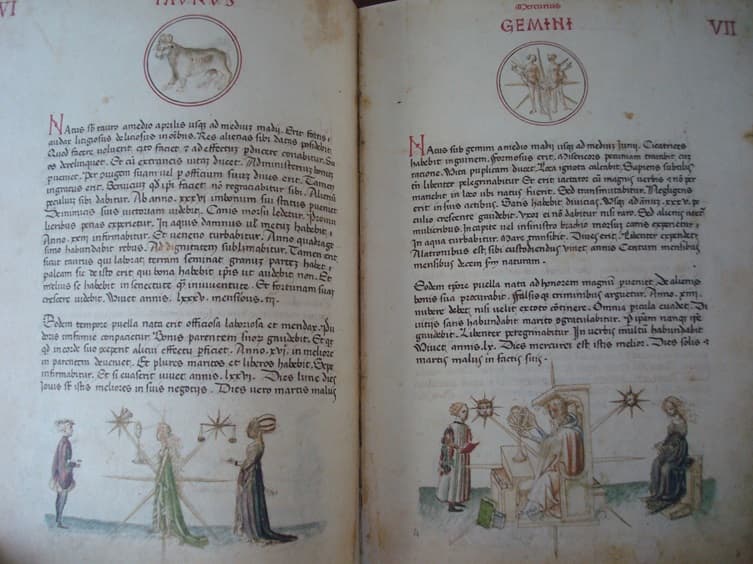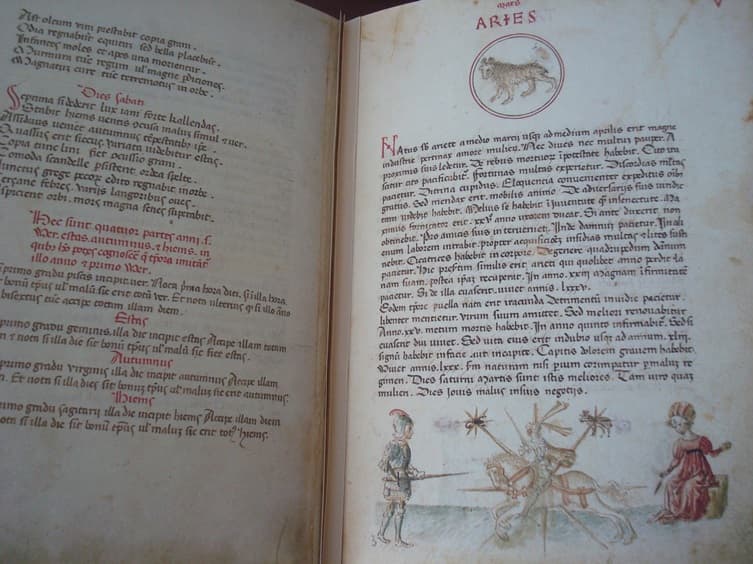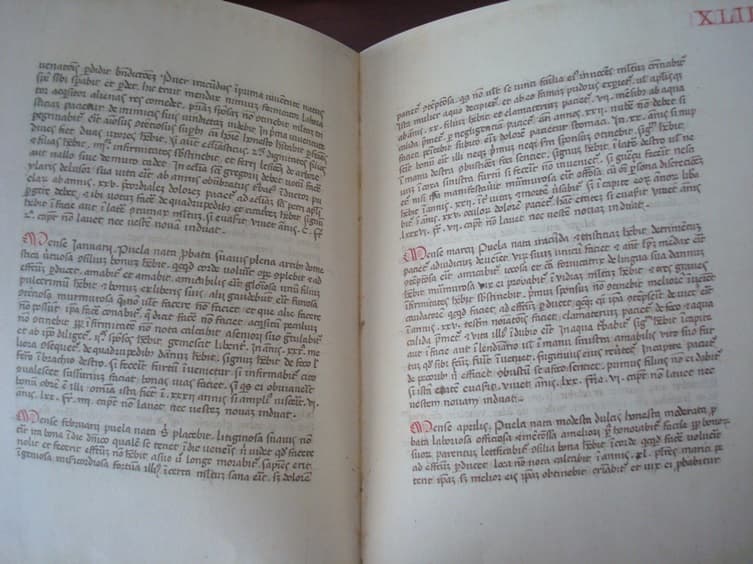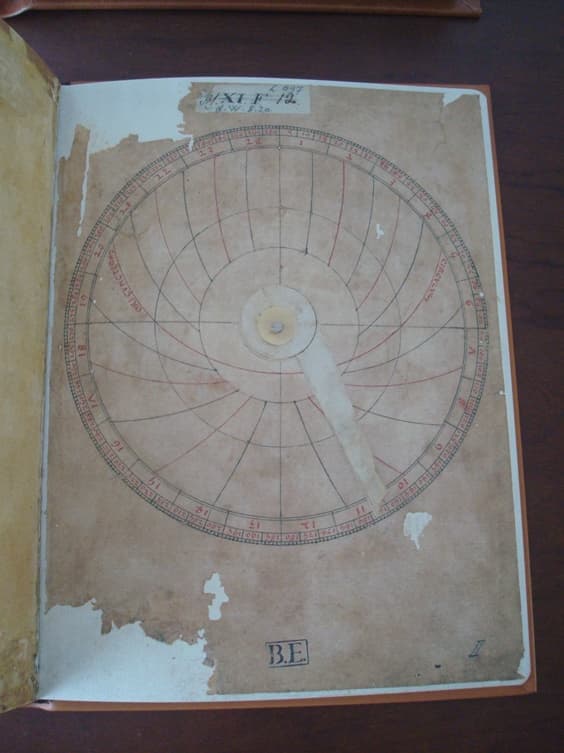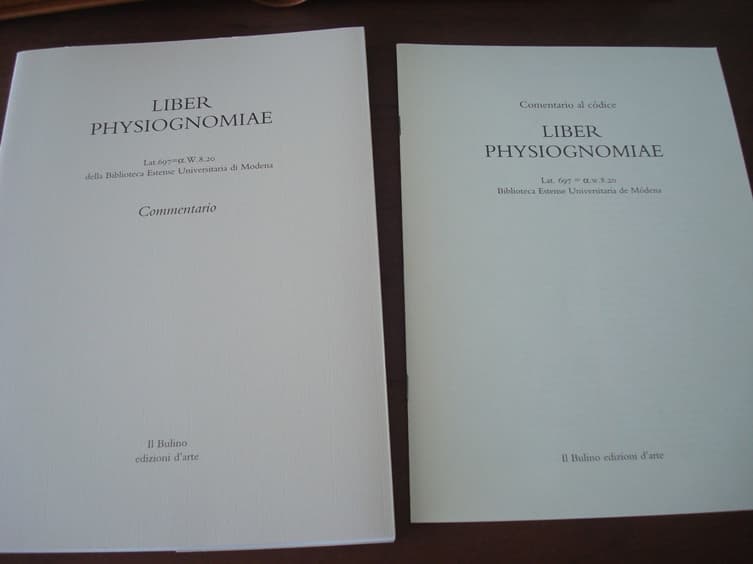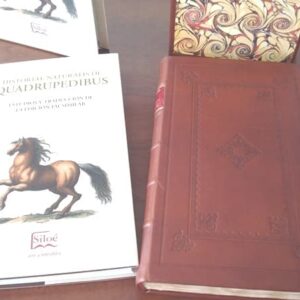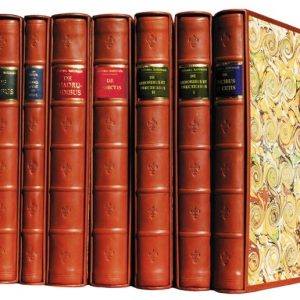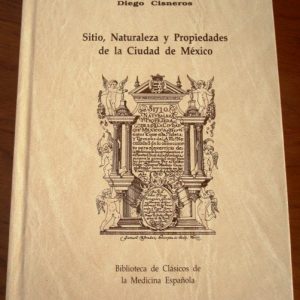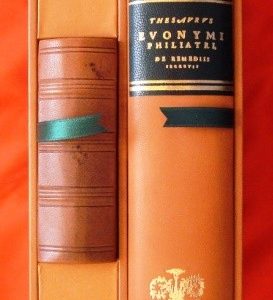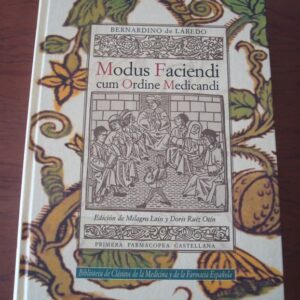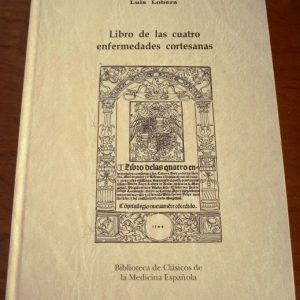Description
Liber Physiognomiae, Art and Horoscopes in a Pre-Renaissance Treatise on Astrology. Circa 1440, consisting of II + 35 + II ff. = 70 pages, numbered with a red seal from I to LXX, two leaves with flat astrolabes and movable indicators for locating the horoscope, and two scrolls; 22.5 × 30.5 cm, leather-bound, text in rounded Gothic Latin.
Liber Physiognomiae is a miscellany of medieval astrological and medical treatises, revised at the dawn of the humanistic era. The author, illuminator, and purchaser of the texts are unknown. The descriptions of the days and the four seasons are followed by the twelve signs of the zodiac, one per page, along with the text of the horoscopes, which describe the character and positive and negative events in the lives of men and women in relation to their birth period. The watercolored figures at the bottom of the page represent the influence of the planets on humanity. The middle and final sections of the codex deal with genealogical tables, the biblical text of the prophet Daniel’s dream (with astrological interpretations), and the medical suggestions of Pietro d’Abano, whose lectures at the University of Padua in the early 14th century are the source of the Liber. The plates with watercolor drawings are the work of an artist influenced by Pisanello. Scholars tend to believe that the codex was produced in Padua, given the direct references to Guariento’s frescoes in the presbytery of the Eremitani, but recent hypotheses, unsupported by proven sources but quite likely, suggest that the work was commissioned by Leonello d’Este.
This facsimile edition of Liber Physiognomiae was produced simultaneously with the restoration of the original, which received a new leather cover with dry-printed borders and an astronomical plate. The edition is printed on Fabriano Accademia paper, while the two membrane-bound leaves of the original codex are on vellum. The stitching and the printed calfskin binding were carried out by skilled artisans. This world-exclusive edition is limited to 980 numbered and certified copies. The 128-page paperback commentary with dust jacket (22.3 x 30.2 cm) contains the complete transcription of the Latin text and its translation, edited by Paola Di Pietro Lombardi, a historical essay on the codex from the same publisher, an artistic study by Leandro Ventura, and a historical contribution by Daniele Bini. Texts are in Italian. It is also accompanied by an 8-page double-column commentary in Spanish (21 x 29 cm).
The codex, the study, and the commentary are presented in a single slipcase. The publisher made two different slipcases, one in cloth and one in leather (for an additional cost of €1,350). The copy we offer is presented with the leather slipcase, and we do not charge the additional price.
The work is complete and in perfect condition.
Free shipping for this item. Ask us any questions, providing the item reference.




